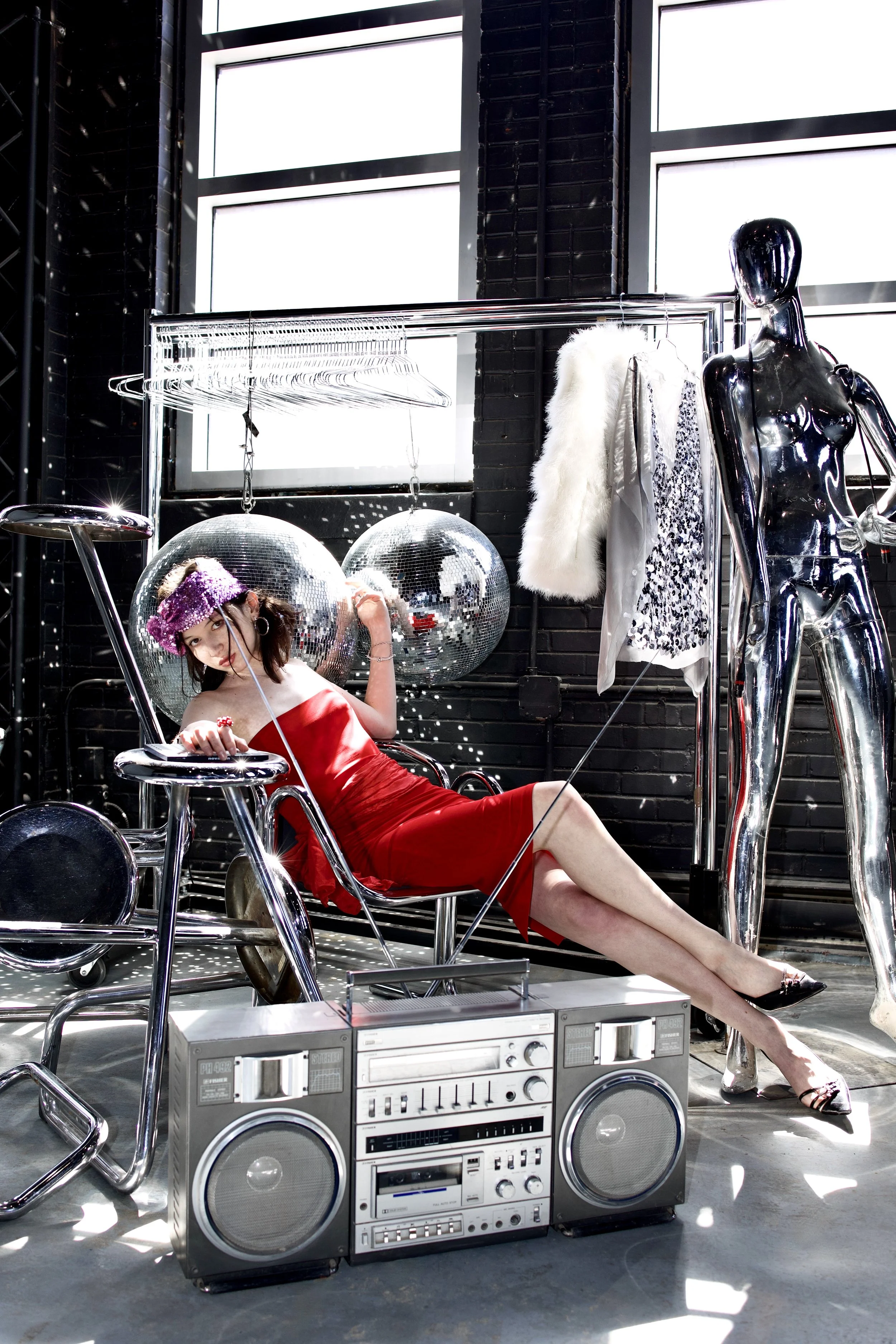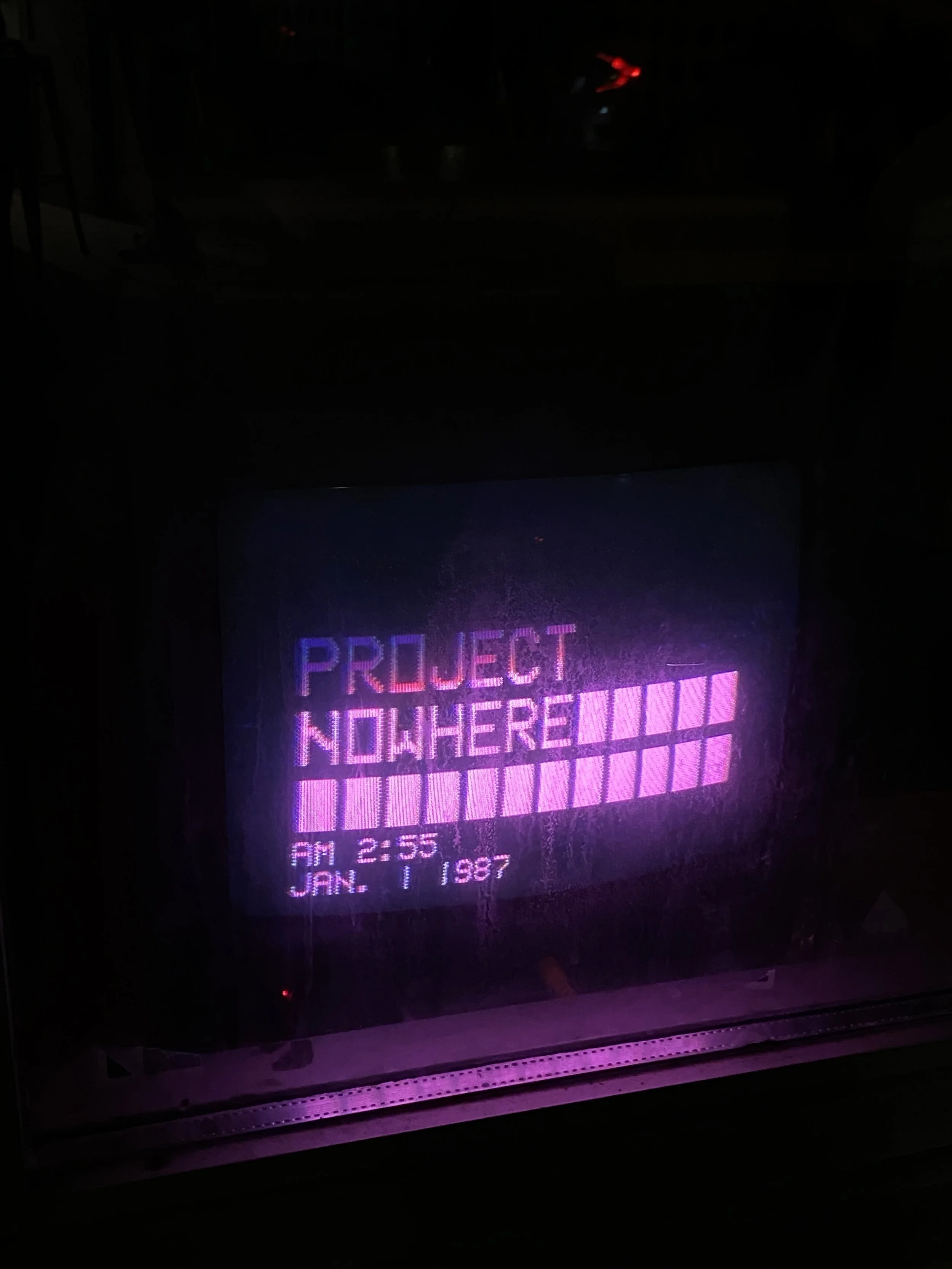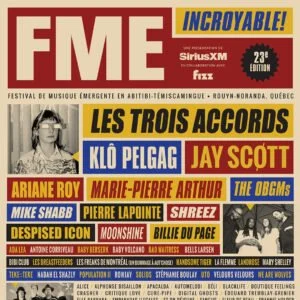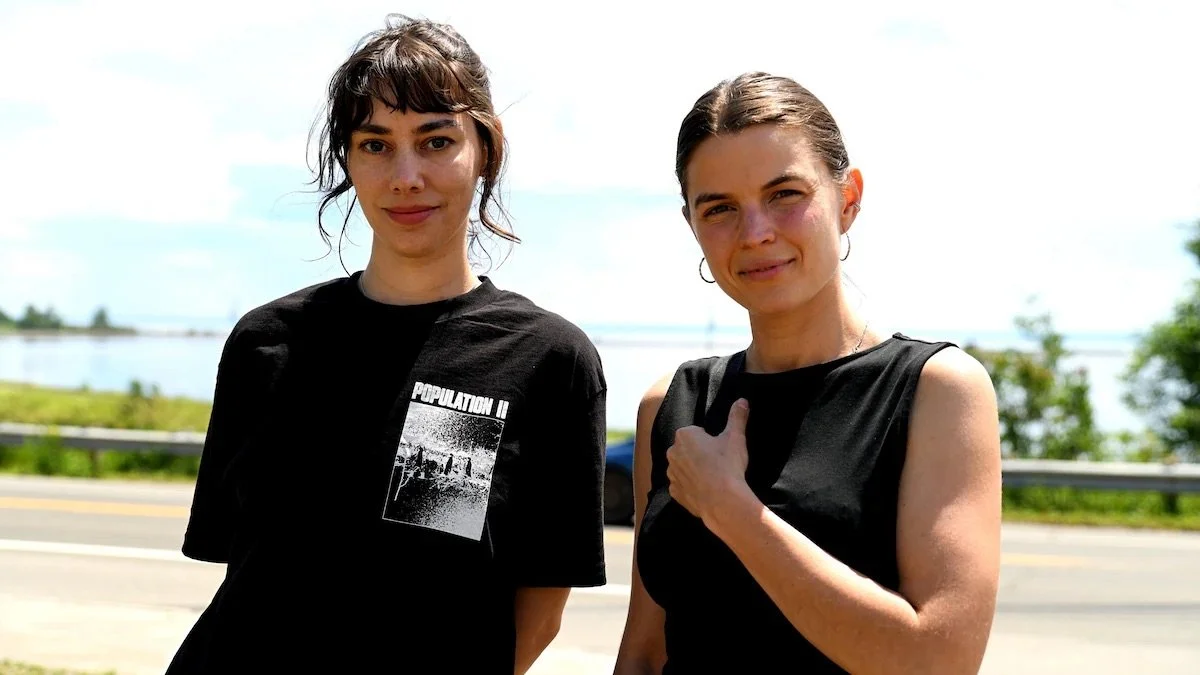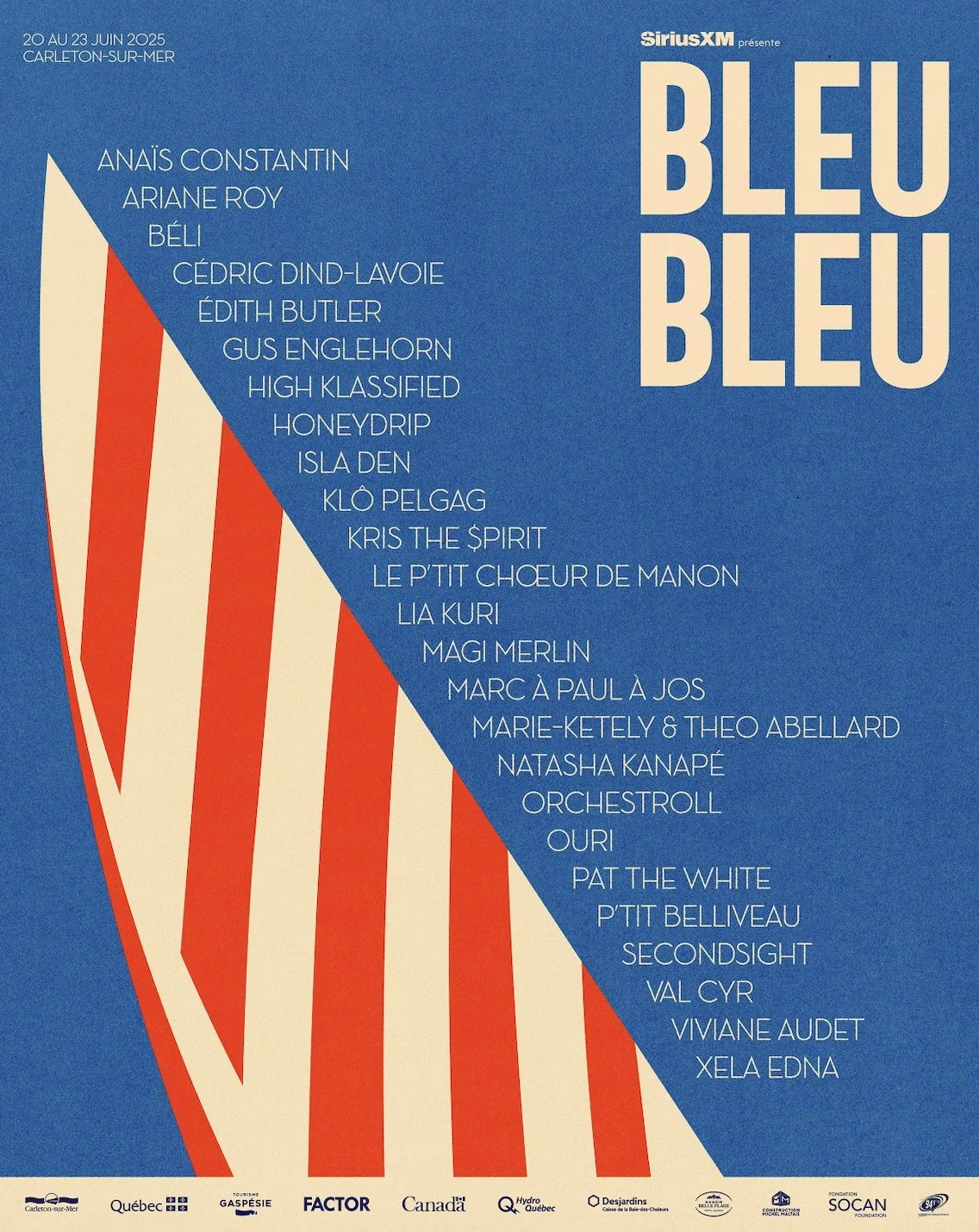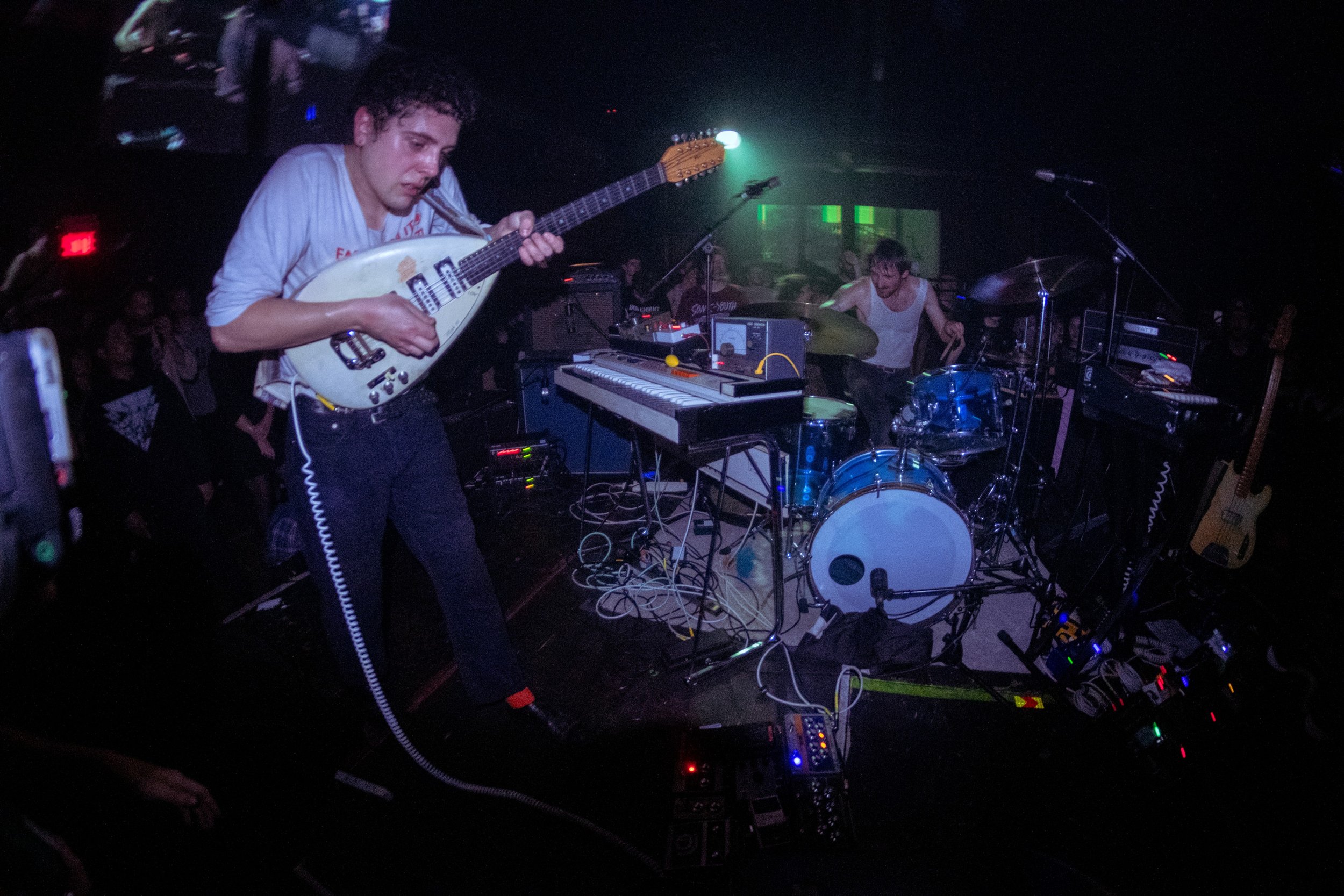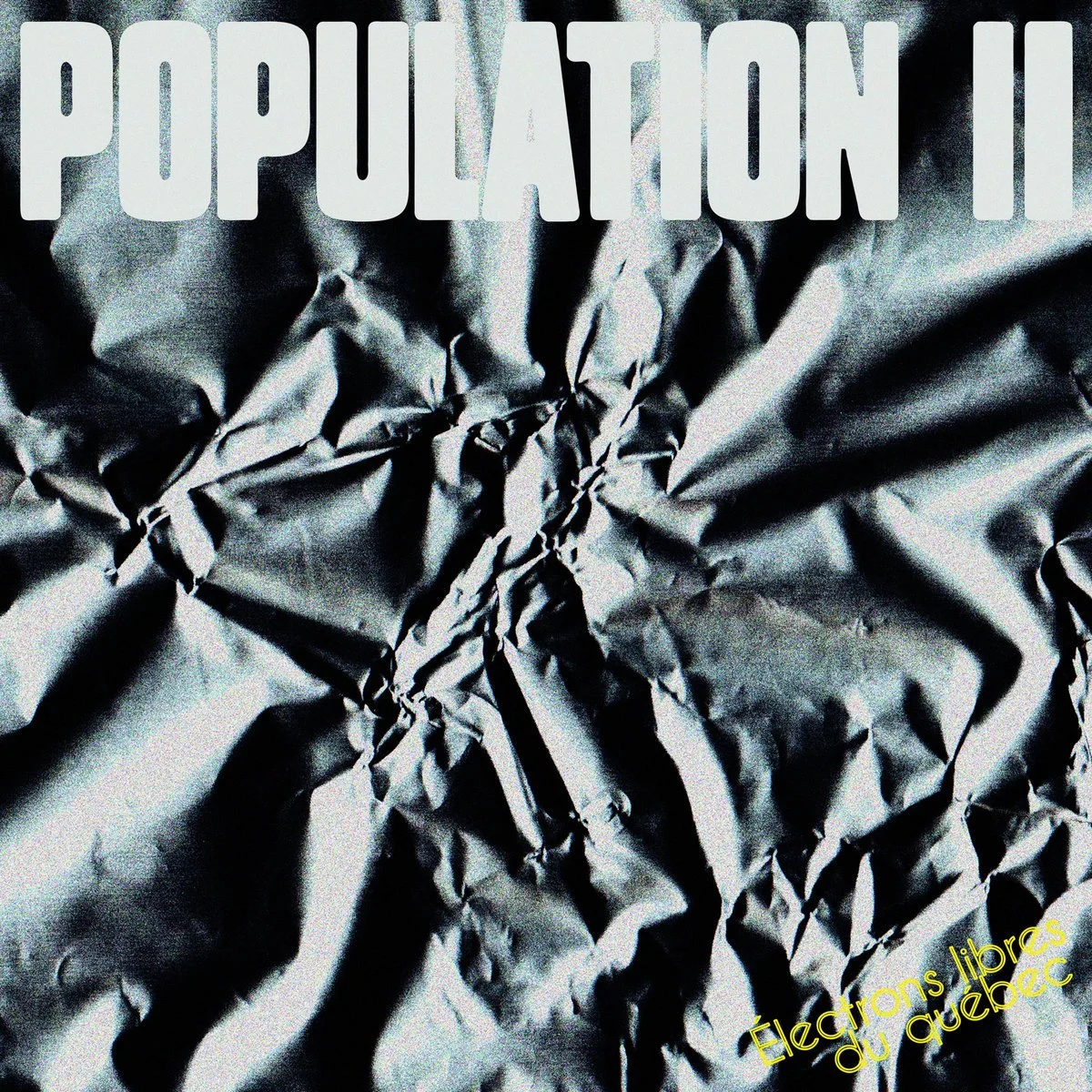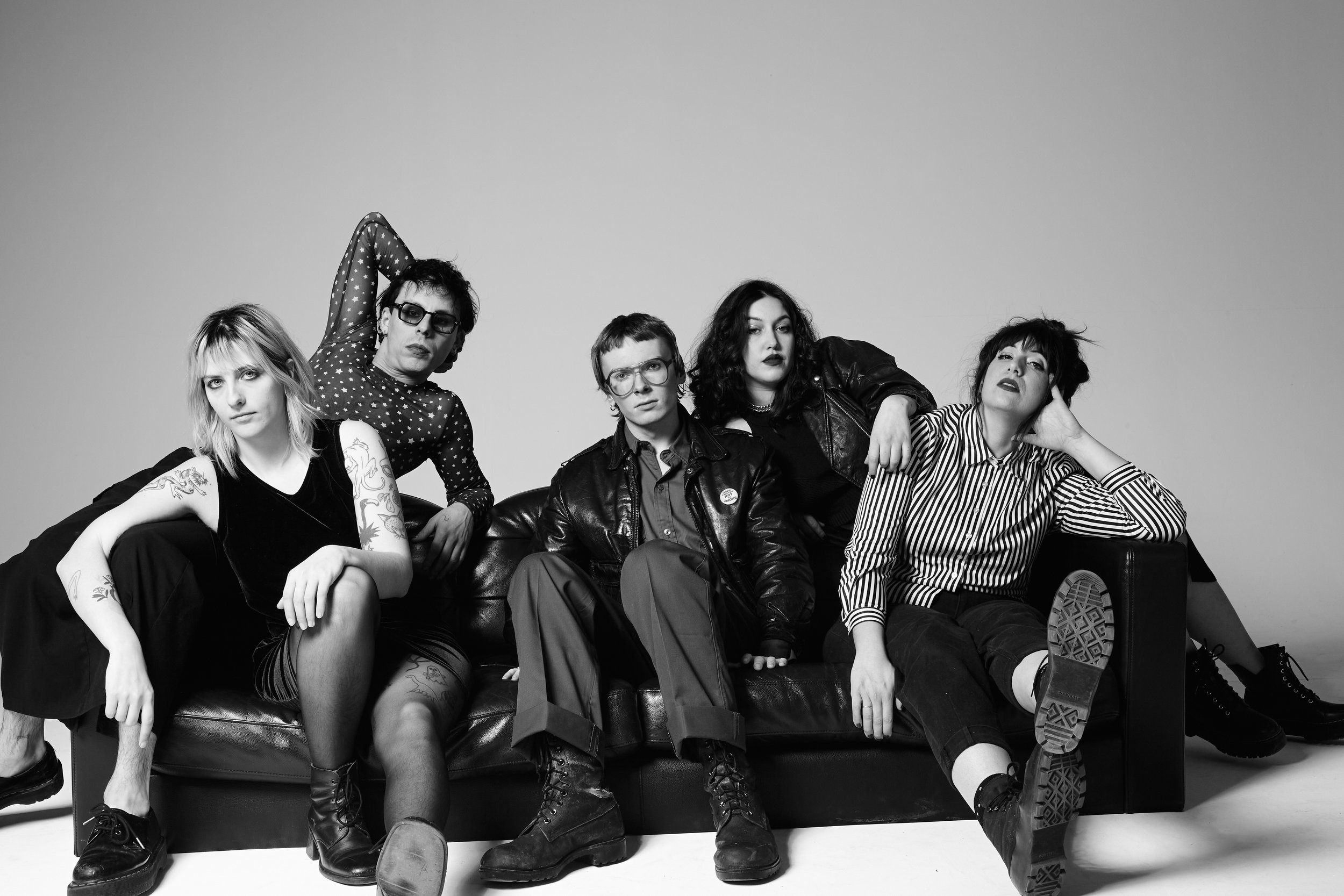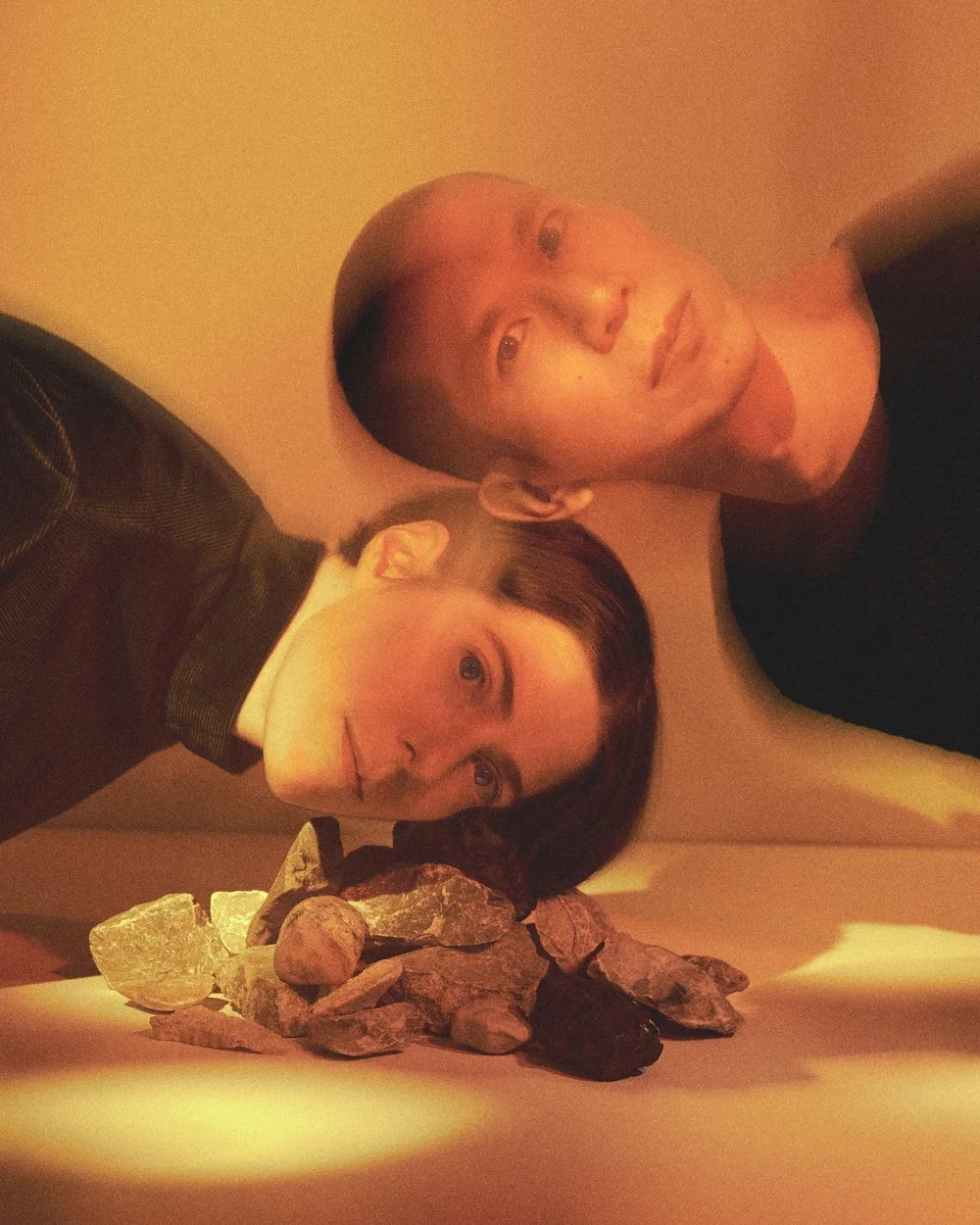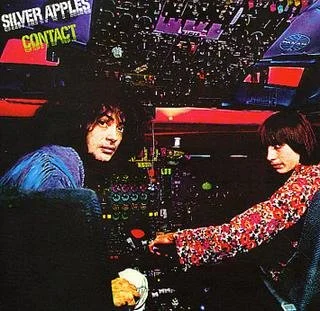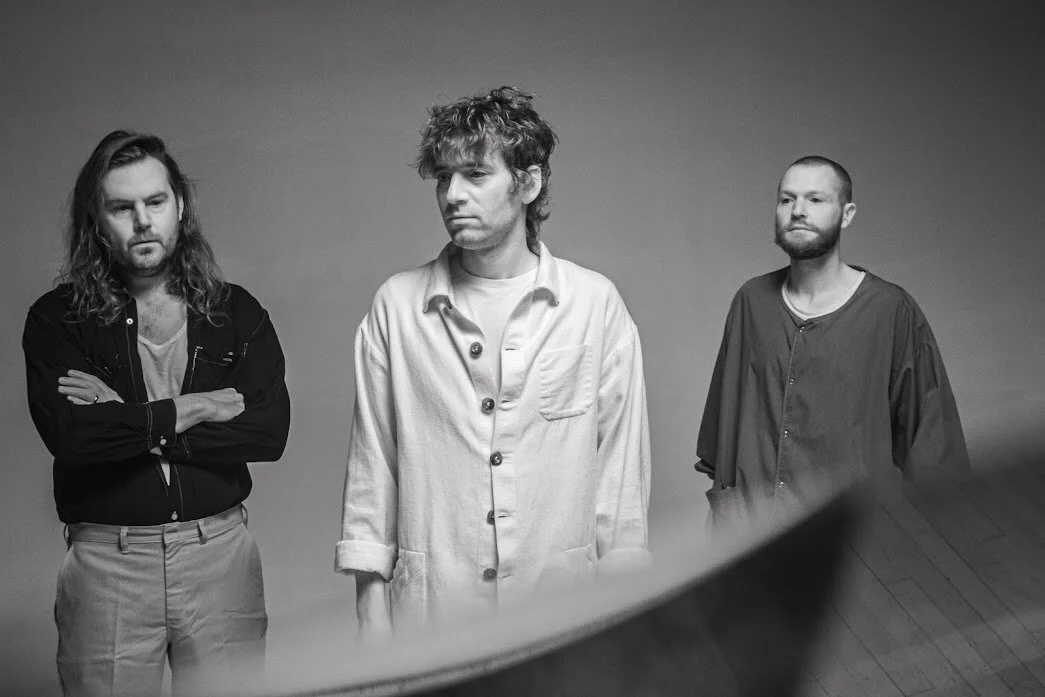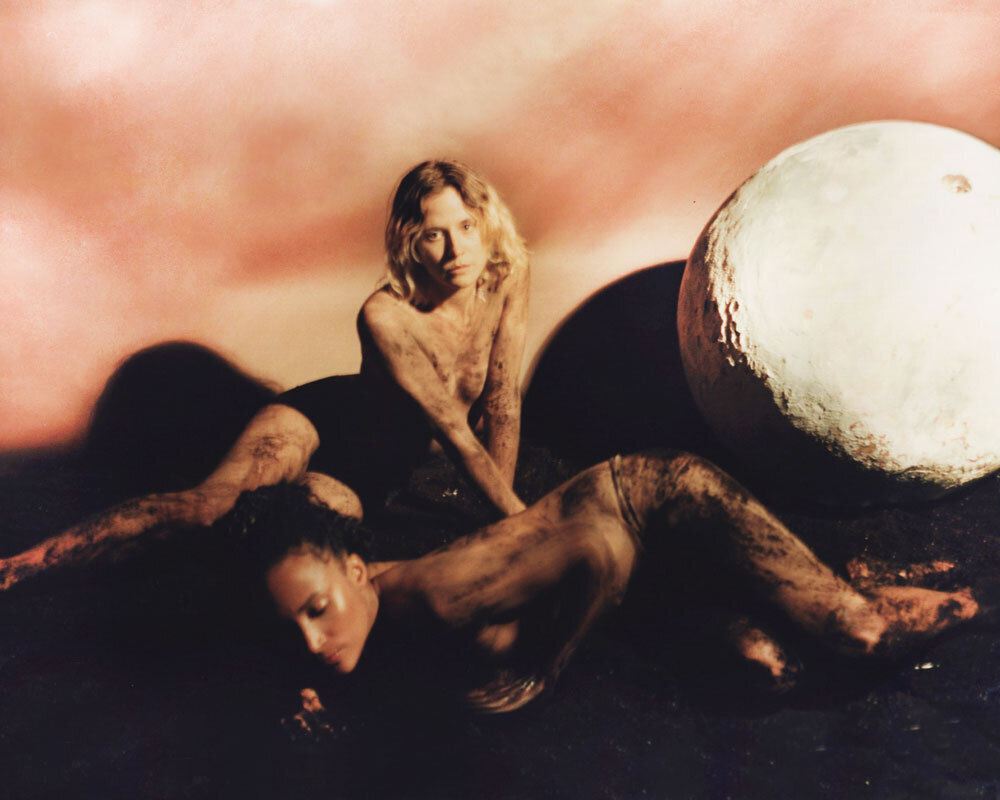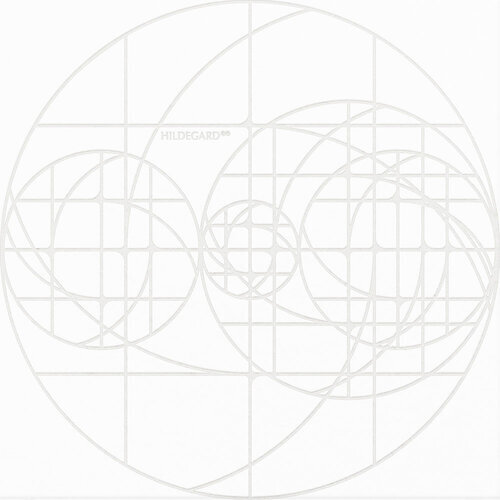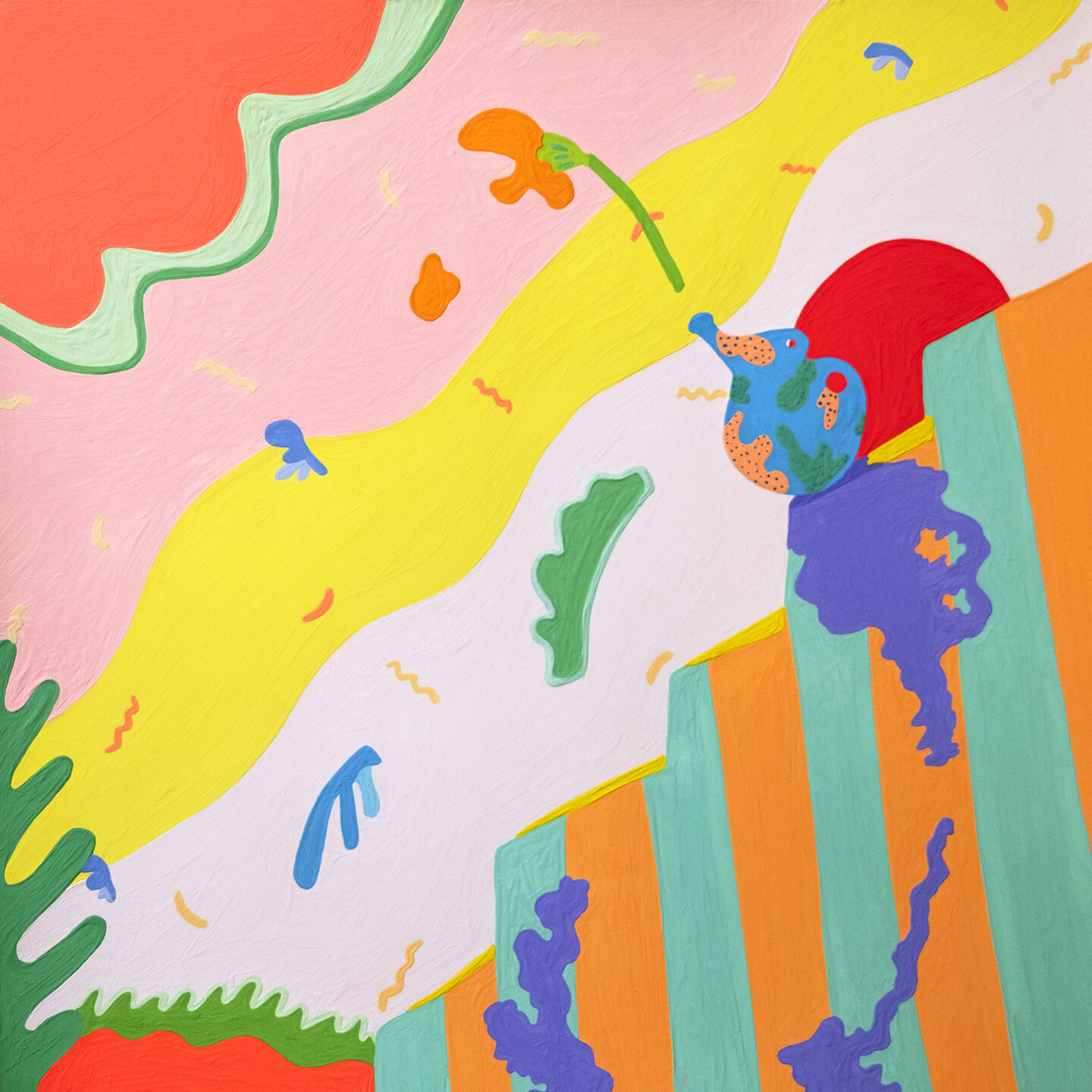Five Years and Three Cities: VICTIME Unveils New Album En Conversation Avec (Mothland)
VICTIME by Rose Cormier, from left to right: Samuel Gougoux, Laurence Gauthier-Brown and Simone Provencher
Crumple it up. Unfold it. Walk away. Come back together and start again (and again). This was noise rock trio VICTIME’s unexpected five year-plan to create their second long-player En conversation avec, unveiled today via Montreal label Mothland.
En conversation avec album artwork by Cléo Sjölander
Deconstructing a guitar-bass-drums mold, while still embracing their unbridled exploratory approach, VICTIME have returned with a genreless sophomore manifesto that they credit as their best work to date. Hurtling at 100kph, En conversation avec is a corrosive, meter-busting rendez-vous of DIY breadboard overdubs, pixelated synth-scapes and a complete disregard for conventional musical permissibility.
Devised across three cities (Gatineau, Montreal and Quebec City) between bandmates Laurence Gauthier-Brown (Ponctuation, Pure Carrière), Simone Provencher (Album) and Samuel Gougoux (Corridor, Kee Avil) through virtual demo-ing with high-stakes jams in-between pandemic lockdowns, En conversation avec is the result of the VICTIME’s unanimous urge to overhaul their sound.
While the band is adverse to talking about the COVID-19 pandemic (with good reason), they agree that making a record long-distance was a cornerstone to the evolution of their creative process.
“Without some delineation of guitar-drum-bass, it truly isn’t a VICTIME record,” says guitarist Provencher. “The three of us worked on every part, which defined the album more than anything. The studio-based approach allowed us to rediscover the joy [in playing] through recording riffs, vocals, rhythms and loops directly on our computers and then sharing them with each other for processing or overdubbing,” she adds.
For vocalist-bassist Gauthier-Brown, the digital back and forth allowed her to tackle difficult and uncharted subject matter through her lyrics differently than before.
“Over the many years with the band, living through both the #MeToo movement and the pandemic, I’ve learned how to use my voice and take my place. The album’s first single [M.A.] allowed me to grieve and process a difficult experience. At first I couldn’t sing it without crying. But at the same time, after 7 years in a relationship, I also wrote my first ever love song with this record. It felt like the first time I could really do it,” she explains.
The band attributes lessons learned from exploring expressive mediums outside of music to the spirit of En conversation avec.
“We weren't necessarily tired, but we were excited about new things that we were learning while working on separate projects,” shares Gauthier-Brown. “We were all playing music with other people, scoring films, theatre and dance pieces as well, and that brought out different elements of our [musical abilities] that we were interested in incorporating into Vicitme,” she adds. “I had worked on a theatre show for two years that never happened because of the pandemic. Having to really sing on my own [while practicing] and not just do rhythm stuff helped me go deeper into myself and find my voice.”
“I remember a moment, way before we even started the record, where Laurence walked into the jam space and said she didn’t want to be in a rock band anymore,” recalls Provencher. “I cried,” adds Gauthier-Brown, as the band laughs in harmony.
“We each wanted to do something different with our own instrument and influence each other’s output,” explains Gougoux. “While using loops isn’t exactly inventing anything new, it brought a different element to thinking about the songs’ rhythmic elements and changed my [creative] vision over time,” he adds.
Since forming in the late 2010s, VICTIME’s trust in each other as friends and collaborators is a testament to the band’s progression in tandem with the members’ individual growth.
“We’ve been able to find a balance in having fun together and being serious,” says Gougoux. “We started this band when we were still teenagers in our heads, but now we all have full-time jobs and are thinking about, you know, having a house and a family,” says Gauthier-Brown, the band all laughing together.
That being said, VICTIME are just as weird, and just as millennial, as they’ve always been. Along with Kim Gordon, eye surgeries and the sadness of roadkill, En conversation avec cites Twilight's Breaking Dawn and the documentary Sisters With Transistors among a myriad of intriguingly cryptic references.
While VICTIME is currently challenged by the ambitious translation of their “studio-heavy” songs to live context, they are collectively eager to see what the future holds for En conversation avec.
“We’ve spent time in different scenes. For me, more the art scene than the music scene. And we’ve changed labels. I have no idea what kind of reception we’re going to get, because we’re starting over again, in a way… But we’re going to keep the momentum going and hopefully not take five more years to write another record,” giggles Provencher.
“Even though I’ve been touring a lot with other projects, I know that the music communities we’ve been in will be receptive and supportive. I think we’re in a place now where we’re just excited to get invited to venues and festivals again,” says Gougoux.
Don’t miss VICTIME’s upcoming shows in Montreal and Ottawa!
EN CONVERSATION AVEC
Out October 25th, 2024 via Mothland
1. Pleine conscience
2. Un beau spectacle
3. M.A.
4. Ces ruines
5. Collage
6. Résonne encore
7. Faire la matière
8. Régicide
9. Figurine
10. En conversation avec








